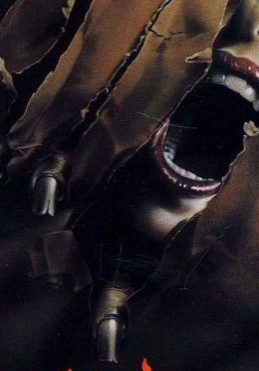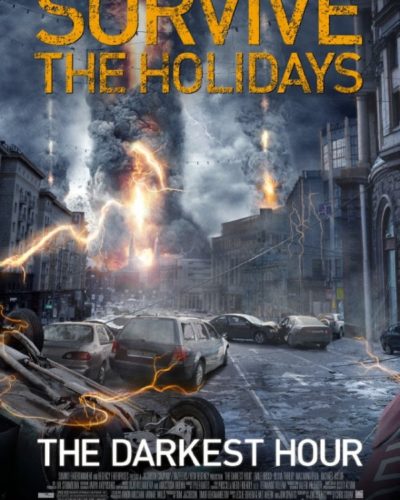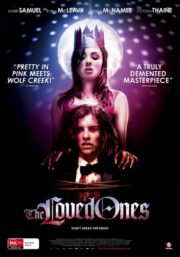A Midnight Howl That Echoes with Dread: A Glimpse into “The Howling”
“Imagine your worst fear a reality,” whispers a voice from the deep shadows of the cinematic forest known as “The Howling,” a film that digs its claws into the very essence of horror. Directed by Joe Dante and released in 1981, “The Howling” transports its audience into a world where nightmares skulk in broad daylight. A spoiler-free sketch of the film follows Karen White, a television journalist who, after a traumatic encounter with a serial killer, retreats to “The Colony,” a remote mountain resort. But the resort’s therapy for Karen’s amnesia soon spirals into a tale of ancient evils and lupine horrors.
Whispers in The Darkness: Crafting Cinematic Fear
The palpable atmosphere of “The Howling” is steeped in the tradition of classic monster tales, yet it deftly interweaves suspense and a sense of foreboding dread. Dante’s expertise in pacing allows the audience’s tension to build incrementally, nearly unnoticed, until fear is the only companion left standing. This is no simple jump-scare affair; it’s a film that truly knows how to marry its shocking visuals with an aura of unease that lingers like fog.
The film’s cinematographic choices are laudable. Distinctive camera angles often give the impression of being watched, a voyeur to the unfolding terror, while lighting is employed to cast long, threatening shadows, shrouding the monsters both figuratively and literally. Notably, special effects wizard Rob Bottin’s work in creature design stands as a landmark achievement, pushing the boundaries of on-screen transformation sequences in an era before CGI took the reins.
Sound is another character in this grisly ballet. The soundtrack amplifies the already taut nerves with its eerie harmonies, masterfully composed by Pino Donaggio. Moments of silence are used judiciously, often preceding the howl of a beast or the scream of a victim. The crack of every twig underfoot and the distant howls that pierce the night all serve to ratchet up the dread.
In the Den of Wolves: Performances That Bite
“The Howling” benefits from a cadre of earnest and grounded performances. Dee Wallace’s portrayal of Karen White captures a riveting descent from traumatized victim to someone far more empowered and complex. Her transition anchors the narrative and gives it a human heart, reminding us that the scariest monsters often wear human faces.
Exploring the multiplicity of horror, “The Howling” finds itself at a crossroad of subgenres. It is a tale of psychological torment and supernatural beastly lore, wrapped up in the skin-shedding practicalities of body horror. Even within these labels, the film seems to gnash its teeth at convention, reinventing werewolf lore for a modern audience.
Audiences are left to ponder the nature of the beast, as Dante’s film toys with psychological fears alongside its physical gory visage. Jumpscares are present but never overused. Instead, “The Howling” gnaws at your psyche, grounding its terror in a more disturbing reality.
Beyond the Growl: Unseen Horrors and Reflective Themes
While “The Howling” excels in its delivery of horror, it also ventures into societal commentary. It can be seen as a parable of self-discovery and the painful struggle to confront and overcome one’s demons. Additionally, the film’s nuanced exploration of community, isolation, and the beast within provides it with a timeless quality that transcends the genre’s typical constraints.
In assessing the effectiveness of “The Howling” as a horror movie, it’s fair to say that while it may not evoke the same level of fear in the desensitized palates of a modern audience, it stands firm as a thought-provoking and innovative piece. Its old-school effects and deliberate pacing might have aged but remain a testament to a time when atmosphere and storytelling were the sinews of horror, rather than the jump scares and high-definition terror of the digital age.
Fans of atmospheric, character-driven horror with practical effects prowess will find “The Howling” a gratifying watch. It’s a piece that may resonate more with connoisseurs of the genre than those seeking the relentless adrenaline rush provided by contemporary horror.
Comparing “The Howling” to other werewolf legends—like “An American Werewolf in London”—one appreciates its unique blend of horror, humor, and social commentary. It eschews the purely tragic or comedic, instead reveling in a complex hybrid that reflects our own multifaceted fears.
In summation, “The Howling” is a masterful piece of horror cinema, balancing on the precipice of the old guard and the new. While not without its imperfections—some effects might now seem quaint, and the pacing could test a modern viewer’s patience—its strengths are as clear as a full moon on a cloudless night. This is essential viewing for genre enthusiasts, with caution advised for those sensitive to graphic content. “The Howling” is a primal scream into the abyss of horror, echoing with an impact that feels undiminished, even after the passing decades.




